Robbe ROXXY BL-Control 820 Handleiding
Robbe
Radiografisch bestuurbaar speelgoed
ROXXY BL-Control 820
Bekijk gratis de handleiding van Robbe ROXXY BL-Control 820 (8 pagina’s), behorend tot de categorie Radiografisch bestuurbaar speelgoed. Deze gids werd als nuttig beoordeeld door 64 mensen en kreeg gemiddeld 4.7 sterren uit 32.5 reviews. Heb je een vraag over Robbe ROXXY BL-Control 820 of wil je andere gebruikers van dit product iets vragen? Stel een vraag
Pagina 1/8

No.
8645/8646
Bedienungsanleitung
Roxxy® BL-Control 810-820
No.
8645/8646
Operating Instructions
Roxxy® BL- Control 810-820
Die Regler BL-Control 810 und BL-Control 820 sind kleine, microprozessorgesteuerte Flugregler mit proportionaler
Steuerung für Brushless Motoren in Slow und Park-Flyern. Vor Anschluss und In be trieb nah me diese An lei tung und die
Sicherheitshinweise bitte aufmerksam lesen.
Technische Daten: Roxxy® BL-Control 810 No. 8645 Roxxy® BL-Control 820 No. 8646
Funktion: Vorwärts, Stopp oder Bremse Vorwärts, Stopp oder Bremse
Motorstrom: 10 A Kurzz.max. 15A 20 A Kurzz.max. 25A
Akkutyp (Zellenzahl): NC / NiMH (6 – 10 Zellen) NC / NiMH (6 – 10 Zellen)
oder LiPo (2 –3 Zellen) oder LiPo (2 –3 Zellen)
Abmessung: 28 x 23 x 8 mm 28 x 23 x 8 mm
Gewicht: 13 g 18 g
BEC: 5V max.1,5A 5V max. 3A
Taktfrequenz: 32 kHz 32 kHz
Programmierbar: Ja (siehe Tabelle) Ja (siehe Tabelle)
Automatische Abschaltung: Ja Ja
Besonderheit Empfängerakku:
Soll statt des BEC-Systems ein separater Empfängerakku verwendet werden, dann muss die rote Leitung
am Empfänger-Anschlusskabel des Reglers aus dem Steckergehäuse gezogen und isoliert werden.
Anschluss :
1. Die drei Motoranschlußkabel an die Kabel des Motors anschließen, bei falscher Laufrichtung des Motors 2 Kabel tauschen.
2. Empfängerkabel mit dem Gaskanal des Empfängers verbinden.
Programmierung der Stop/ Vorwärts Position:
1. Sender einschalten und Gasknüppel in die Vorwärtsposition bringen.
2. Spannungsversorgung an den Regler anschließen.
3. Der Regler bestätigt mit einer kurzen Tonfolge.
4. Nach ca. 10 Sekunden ertönt eine Doppeltonfolge als Bestätigung für erfolgreiche Programmierung der Vorwärtsposition.
5. Gasknüppel in die Stopposition bringen, eine kurze Tonfolge bestätigt die erfolgreiche Programmierung der Stopposition.
6. Zum Speichern der Einstellung trennen Sie den Regler vom Akku.
Programmierung der Parameter:
Es können zwei Parameter programmiert werden.
Der in den Programmiermodus erfolgt durch:Eintritt
1. Sender einschalten und Gasknüppel in die Vorwärtsposition bringen.
2. Spannungsversorgung an den Regler anschließen.
3. Der Regler bestätigt mit einer kurzen Tonfolge.
4. Nach ca. 10 Sekunden ertönt eine Doppeltonfolge, nach weiteren ca. 3 Sekunden ertönt eine Dreifachtonfolge.
Der Regler zeigt durch kontinuierliches einmaliges Piepsen und Blinken der LED, (Akkutyp) an.jetzt Parameter 1
Zum Ändern des Akkutyps ist zunächst ein Wechsel des Gasknüppels aus der Vorwärtsposition in die Stopposition
erforderlich. Danach zeigt der Regler den aktuell eingestellten Akkutyp an (siehe Tabelle).
Sicherheitshinweise
- Bei Inbetriebnahme nie in den Drehkreis der Luftschraube greifen - Verletzungsgefahr.
- Beachten Sie die technischen Daten des Reglers.
- Polung aller Anschlusskabel beachten.
- Kurzschlüsse unbedingt vermeiden.
- Den Regler so einbauen bzw. verpacken, dass er nicht mit Fett, Öl oder Wasser in Berührung kommen kann.
- Für ausreichende Luftzirkulation sorgen.
Parameter 1 (Akkutyp). Zum Abspeichern der zuvor gemachten Einstellung trennen Sie den Regler vom Akku.
Auswahl Parameter 2 (Bremse)
Der Regler zeigt jetzt durch kontinuierliches Piepsen und Blinken der LED die Auswahl von Parameter 2 an. Befindet sich der
Regler wieder auf Parameter 1 (Akkutyp), erfolgt die Umstellung auf Parameter 2 in dem Sie den Gasknüppel aus der Vorwärts-
position in die Stopposition und zurück in die Vorwärtsposition bringen. Die Einstellung der Bremse erfolgt analog zur Einstellung
des Akkutyps.
Parameter LED EIN
Beep alle 2 Sek.
LED blinkt
Beep alle 0,5 Sek.
Akkutyp LiPo NiCD/NiMH
Bremse Aus Ein
Um nun den Akkutyp zu ändern, bewegen Sie den Gasknüppel
schnell aus der Stopposition in die Vorwärtsposition und zurück in
die Stoppposition. Der pieps und blink Intervall ändert sich
entsprechend (siehe Tabelle).
Die Übernahme der Änderung erfolgt durch einen Wechsel des
Gasknüppels von der Stopposition in die Vorwärtsposition.
Nach der erfolgreichen Übernahme schaltet der Regler wieder auf
The BL-Control 810 and BL-Control 820 controllers are small, microprocessor-controlled flight controller with propor-
tional control for brushless motors in slow and park flyers. Carefully read through these instructions and the safety infor-
mation before connecting and starting up your model.
Technical data: Roxxy® BL-Control 810 No. 8645 Roxxy® BL-Control 820 No. 8646
Function: Forward, stop or brake Forward, stop or brake
Motor current: 10 A short-term.max. 15A 20 A short-term.max. 25A
Battery type (number of cells): NC/NiMH (6 – 10 cells) NC/NiMH (6 – 10 cells)
or LiPo (2 –3 cells) or LiPo (2 –3 cells)
Dimensions: 28 x 23 x 8 mm 28 x 23 x 8 mm
Weight: 13 g 18 g
BEC: 5V max.1.5A 5V max. 3A
Clock frequency: 32 kHz 32 kHz
Programmable: Yes (see table) Yes (see table)
Automatic deactivation: Yes Yes
Note on receiver battery:
If a separate receiver battery is used instead of the BEC system, the red wire
at the receiver connection cable of the controller must be disconnected from the connector housing and insulated.
Connection:
1. Connect the three motor connection cables to the cables at the motor. Interchange the two cables if the motor turns in the
wrong direction.
2. Connect the receiver cable to the throttle channel of the receiver.
Programming the Stop/Forward position:
1. Switch on the transmitter and move the throttle stick to the Forward position.
2. Connect the voltage supply to the controller.
3. The controller confirms power is connected by sounding a short tone sequence.
4. A double tone sequence sounds after about 10 seconds, confirming that the Forward position has been successfully pro-
grammed.
5. Move the throttle stick to the Stop position, a short tone sequence confirms that the Stop position has been programmed suc-
cessfully.
6. Disconnect the controller from the battery to save the setting.
Programming the paramters:
Two parameters can be programmed.
Access programming mode as follows:
1. Switch on the transmitter and move the throttle stick to the Forward position.
2. Connect the voltage supply to the controller.
3. The controller confirms power is connected by sounding a short tone sequence.
4. A double tone sequence sounds after about 10 seconds, a triple tone sequence sounds after a further 3 seconds.
The controller indicates Parameter 1 (battery type) by a continuous beeping and the LED flashing.now
To change the battery type, it is first necessary to move the throttle stick from the Forward position to the Stop position.
Safety Information
- When starting the model, never reach into the rotating propeller - risk of injury.
- Pay attention to the technical data of the controller.
- Ensure correct polarity of all connection cables.
- Make sure you avoid short-circuits.
- Install or pack the controller in such a way that it cannot come in contact with grease, oil or water.
- Ensure adequate air circulation.
successfully, the controller switches back to Parameter 1 (battery type). Disconnect the controller from the battery to save the
setting.
Selection parameter 2 (brake)
The controller now indicates the selection of parameter 2 by a continuous beeping and the LED flashing. If the controller is still set
to parameter 1 (battery type) change over to parameter 2 by moving the throttle stick from the Forward position to the Stop position
and back to the Forward position. The brake is set in the same way as setting the battery type.
The controller then shows the battery type currently set (see table).
To change the battery type, quickly move the throttle stick from the
Stop position to the Forward position and back to the Stop position.
The beep and flashing interval changes accordingly (see table).
The change is adopted by moving the throttle stick from the Stop
position to the Forward position.Once the setting has been adopted
Parameter LED ON
Beep every 2 Sek.
LED flashing
Beep every 0,5 Sek.
Battery type LiPo NiCD/NiMH
Brake OFF On


réf.
8645/8646
Notice d’utilisation
Variateur Roxxy® BL-Control 810-820
Art.N
8645/8646
Istruzioni per l’uso
Roxxy® BL-Control 810-820
Il regolatore “BL-Control” 810” e BL-Control” 820” sono regolatori di volo piccoli, controllati da microprocessori con
comando proporzionale per motori Brushless in slow e parkflyer. Prima del collegamento e della messa in funzione, leg-
gere attentamente le presenti istruzioni e indicazioni di sicurezza.
Dati tecnici: Roxxy® BL-Control 810 N. 8645 Roxxy® BL-Control 820 N. 8646
Funzione: Avanti, Stop oppure Freni Avanti Stop oppure Freni
Corrente motore: 10 A brevi max 15A 20 A brevi max. 25A
Tipo di batteria
(numero di celle): NC / NiMH ( 6 - 10 celle) NC / NiMH (6 - 10 celle)
oppure LiPo (2 –3 celle) oppure LiPo (2 –3 celle)
Dimensioni: 28 x 23 x 8 mm 28 x 23 x 8 mm
Peso: 13 g 18 g
BEC: 5V max.1,5A 5V max. 3A
Frequenza d’impulsi: 32 kHz 32 kHz
Programmabile: Si (vedi tabella) Si (vedi tabella)
Disattivazione automatica: si si
Particolarità batteria della ricevente:
Invece del sistema Bec, deve essere utilizzata una batteria della ricevente separata e il condotto rosso
posizionato sul cavo di collegamento della ricevente del regolatore deve essere tirato fuori dalla custodia dell’innesto e isolato.
Collegamento:
1. Collegare i tre cavi di collegamento del motore ai cavi del motore e in caso di errato passo di rotazione del motore invertire i
due cavi.
2. Collegare il cavo della ricevente al canale del gas della ricevente.
Programmazione della posizione Stop / Avanti:
1. Accendere la trasmittente e portare il comando del gas in “posizione avanti”.
2. Collegare l’alimentazione di tensione al regolatore.
3. Il regolatore conferma con una breve sequenza di suoni.
4. Dopo circa 10 secondi si ha una doppia sequenza di suoni come conferma dell’esatta programmazione della posizione avanti.
5. Portare il comando del gas in posizione di stop: una breve sequenza di suoni conferma l’esatta programmazione della posizione
di stop.
6. Per il salvataggio dell’impostazione, dividere il regolatore dalla batteria.
Programmazione dei parametri:
Possono essere programmati due parametri.
L’entrata nella modalità di programmazione si effettua nel modo seguente:
1. Accendere la trasmittente e portare il comando del gas in “posizione avanti”.
2. Collegare l’alimentazione di tensione al regolatore.
3. Il regolatore conferma con una breve sequenza di suoni.
4. Dopo circa 10 secondi si ha una doppia sequenza di suoni, dopo altri 3 secondi si ha una tripla sequenza di suoni. Il regolatore
visualizza ora, attraverso un suono e una illuminazione del LED continuativi, il parametro 1 (tipo di batteria).
Per modificare il tipo di batteria è necessario innanzitutto un cambio
del comando del gas dalla posizione avanti alla posizione stop.
Norme di sicurezza
- Durante la messa in funzione non afferrare mai il modelli nell’area di rotazione delle eliche - pericolo di lesioni.
- Prestare attenzione ai dati tecnici del regolatore.
- Prestare attenzione alla polarità di tutti i cavi di collegamento.
- Evitare assolutamente i cortocircuiti.
- Montare e/o impacchettare il regolatore in modo che non entri in contatto con grassi, olio o acqua.
- Verificare la sufficiente circolazione dell’aria.
della modifica avviene attraverso un cambio del comando del gas dalla posizione stop alla posizione avanti. Dopo l’esatta acqui-
sizione il regolatore torna nuovamente al parametro 1 (tipo di batteria). Per il salvataggio dell’impostazione precedente, dividere
il regolatore dalla batteria.
Scelta parametro 2 (freno)
Il regolatore visualizza ora, attraverso un suono e una illuminazione del LED continuativi, la scelta del parametro 2. Se il regolatore
si trova ancora sul parametro 1 (tipo di batteria), la commutazione sul parametro 2 avviene portanto il comando del gas dalla
posizione avanti alla posizione stop e indietro alla posizione avanti. L’impostazione del freno avviene in maniera analoga rispetto
all’impostazione del tipo di batteria.
Dopodiché il regolatore visualizza il tipo di batteria attualmente
impostato (vedi tabella). Per modificare ora il tipo di batteria, muo-
vere il comando del gas velocemente dalla posizione stop in
posizione avanti e indietronella posizione stop. L’intervallo di suono
e illuminazione varia di conseguenza (vedi tabella) L’acquisizione
Parameter LED Acceso
Beep ogni 2 Sek.
LED iameggia
Beep ogni 0,5 Sek.
Tipo di batteria LiPo NiCD/NiMH
Freno Spento Acceso
Les variateurs BL-Control 810 et BL-Control 820 sont des petits pilotes automatiques commandés par un microproces-
seur à commande proportionnelle pour les moteurs sans balais dans les avions de vol lent et en parc. Veuillez lire atten-
tivement ces instructions et les consignes de sécurité avant de les brancher et de les mettre en service.
Caractéristiques techniques : Roxxy® BL-Control 810 réf. 8645 Roxxy® BL-Control 820 réf.8646
Fonction : vers l’avant, arrêt ou frein Vers l’avant, arrêt ou frein
Courant moteur : 10 A brièv. max. 15 A 20 A brièv. max. 25 A
Type d’accu (nombre d’éléments): NiCd / NiMH (6 à 10 cellules) NiCd / NiMH (6 à 10 cellules)
ou LiPo (2 à 3 cellules) ou LiPo (2 à 3 cellules)
Dimensions : 28 x 23 x 8 mm 28 x 23 x 8 mm
Poids : 13 g 18 g
BEC : 5 V max. 1,5 A 5 V max. 3 A
Fréquence des impulsions : 32 kHz 32 kHz
Programmable : oui (voir le tableau) oui (voir le tableau)
Arrêt automatique : oui oui
Particularité de l’accu récepteur :
Si un accu récepteur isolé doit être utilisé à la place du système BEC, il faut alors retirer la ligne rouge
du câble de raccordement du récepteur hors du boîtier de connexion et l’isoler.
Raccordement :
1. Raccorder les trois câbles de branchement du moteur aux câbles du moteur, en cas de mauvais sens de rotation du moteur,
inverser deux câbles.
2. Raccorder le câble du récepteur à la voie des gaz du récepteur.
Programmation de la position arrêt / vers l’avant :
1. Mettre l’émetteur en marche et amener le manche des gaz en position vers l’avant.
2. Raccorder l’alimentation en tension au variateur.
3. Le variateur confirme l’opération en émettant une brève séquence sonore.
4. Une séquence sonore double de confirmation de la programmation réussie de la position vers l’avant retentit après env. 10
secondes.
5. Amener le manche des gaz à la position arrêt, une brève séquence sonore confirme la programmation réussie de la position
d’arrêt.
6. Pour mémoriser le réglage, débrancher le variateur de l’accu.
Programmation des paramètres :
Il est possible de programmer deux paramètres.
L’accès au mode de programmation a lieu comme suit :
1. Mettre l’émetteur en marche et amener le manche des gaz en position vers l’avant.
2. Raccorder l’alimentation en tension au variateur.
3. Le variateur confirme l’opération en émettant une brève séquence sonore.
4. Une séquence sonore double retentit env. 10 secondes plus tard ; 3 autres secondes plus tard retentit une séquence sonore
triple.
Le variateur indique maintenant le paramètre 1 (type d’accu) par un bip sonore unique et continu et par la DEL qui clignote.
Pour modifier le type de l’accu, il est nécessaire de faire passer le manche des gaz de la position vers l’avant à la position arrêt.
Consignes de sécurité
- Lors de la mise en service, ne jamais mettre la main dans le rayon de rotation de l’hélice – risque de blessures.
- Tenir compte des caractéristiques techniques du variateur.
- Respecter la polarité de tous les câbles de raccordement.
- Éviter absolument les courts-circuits.
- Installer ou emballer le variateur de telle sorte qu’il ne puisse entrer en contact avec de la graisse, de l’huile ou de l’eau.
- Veiller à une circulation d’air suffisante.
tableau). La reprise de la modification a lieu avec le passage du manche des gaz de la position arrêt à la position vers l’avant. Une
fois que la reprise a été couronnée de succès, le variateur revient au paramètre 1 (type d’accu). Débrancher le variateur de l’accu
pour mémoriser le réglage effectué auparavant.
Sélection du paramètre 2 (frein)
Le variateur indique maintenant par un bip sonore continu et un clignotement de la DEL la sélection du paramètre 2. Si le variateur
se trouve de nouveau au paramètre 1 (type de l’accu), le passage au paramètre 2 a lieu en ramenant le manche des gaz de la
position vers l’avant à la position arrêt, puis de nouveau à la position en avant. Le réglage du frein a lieu de manière similaire au
réglage du type de l’accu.
Le variateur indique ensuite le type d’accu actuellement réglé-
(voir le tableau). Pour modifier maintenant le type d’accu, faire-
bouger rapidement le manche des gaz de la position arrêt à la posi-
tion vers l’avant et de nouveau à la position arrêt. L’intervalle du
signal sonore et de clignotement change en conséquence (voir le
Paramètres La DEL est allumée
Bip sonore toutes les
2 secondes
La DEL clignote
Bip sonore toutes les
0,5 secondes
Type d‘accu LiPo NiCD/NiMH
Frein Marche Arrêt
Product specificaties
| Merk: | Robbe |
| Categorie: | Radiografisch bestuurbaar speelgoed |
| Model: | ROXXY BL-Control 820 |
| Kleur van het product: | Meerkleurig |
| Gewicht: | 18 g |
| Breedte: | 28 mm |
| Diepte: | 23 mm |
| Hoogte: | 8 mm |
| Soort: | Radio-Controlled (RC) Model Parts |
Heb je hulp nodig?
Als je hulp nodig hebt met Robbe ROXXY BL-Control 820 stel dan hieronder een vraag en andere gebruikers zullen je antwoorden
Handleiding Radiografisch bestuurbaar speelgoed Robbe

30 Maart 2025

30 Maart 2025

30 Maart 2025

30 Maart 2025

30 Maart 2025

30 Maart 2025
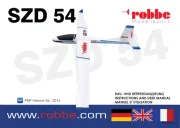
28 Maart 2025

26 Maart 2025

25 Februari 2025
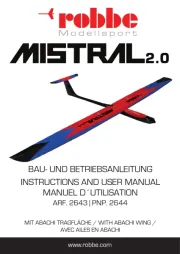
25 Februari 2025
Handleiding Radiografisch bestuurbaar speelgoed
- Lenoxx
- Maginon
- ARRMA
- ParkZone
- Proline
- Little Tikes
- Reely
- FMS
- DJI
- Revell
- JR
- Hobbywing
- Spin Master
- FlySky
- TacTic
Nieuwste handleidingen voor Radiografisch bestuurbaar speelgoed
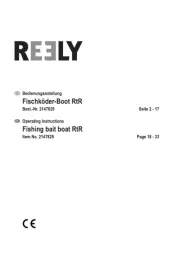
1 September 2025
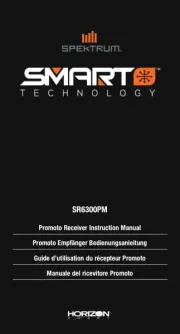
1 September 2025
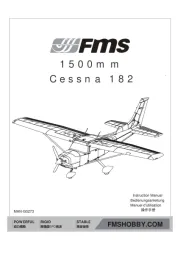
12 Augustus 2025
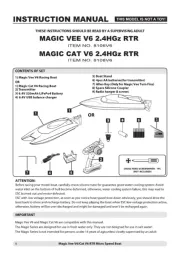
28 Juli 2025
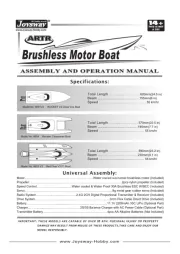
28 Juli 2025
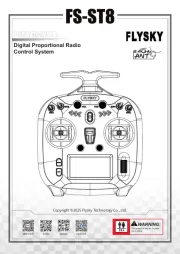
28 Juli 2025

9 Juli 2025

8 Juli 2025

8 Juli 2025
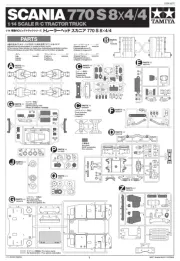
7 Juli 2025